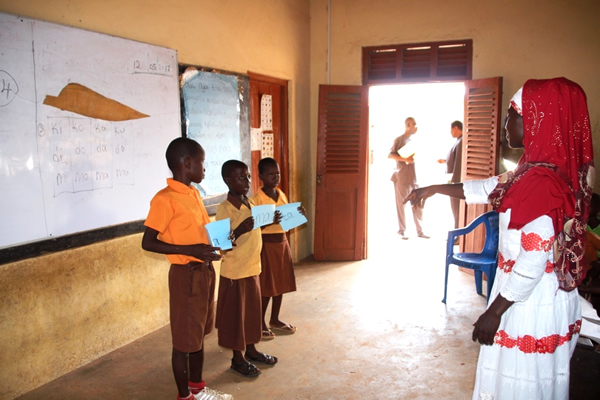 The United States Agency for International Development (USAID), in partnership with the Ministry of Education (MoE) and the Ghana Education Service (GES), has begun to scale up GES’s Early Grade Reading Program to 6,866 schools in 100 districts.
The United States Agency for International Development (USAID), in partnership with the Ministry of Education (MoE) and the Ghana Education Service (GES), has begun to scale up GES’s Early Grade Reading Program to 6,866 schools in 100 districts.
The reading program will develop improved teaching and learning materials and train 28,000 teachers, head teachers, and curriculum leads on the phonics-based approach to teaching children how to read in the 11 GES-approved Ghanaian languages. The program employs a systematic approach to teach letters, sounds, and words, in order to help children to read with fluency and comprehension. Circuit supervisors will be trained to monitor and support schools’ implementation of the Early Grade Reading Program, and districts will be encouraged to develop District Reading Action Plans to promote reading in schools and homes. The program is expected to reach more than one million pupils from KG2 to P2 by 2019.
A similar pilot program that was implemented in Yendi Municipal in the Northern Region demonstrated the viability of this approach. USAID supported the MoE and GES to develop and prototype a systematic phonics-based reading program in Dagbani. In just 8 weeks, children in Grade P1 went from being able to recognize three correct letter sounds per minute to being able to recognize 16 correct letter sounds per minute. During the same time period, these children exhibited a 31 percent improvement in reading words and a 26 percent improvement in reading sentences, as measured by the Early Grade Reading Assessment.
Ashanti Regional Director of Education Mary Owusu Achiaw said that regional directors are committed to ensuring the program’s success. “We feel that we are part of it and we will commit to ensure its sustainability,” she said.
The goal of USAID’s education program is to increase the number of Ghanaian children who are able to read with fluency and comprehension in the early grades of primary school. USAID works with the MOE, GES, the private sector, communities, and other stakeholders to achieve this goal by improving school management systems, training teachers and administrators, providing improved reading and learning materials, and promoting a culture of reading.























